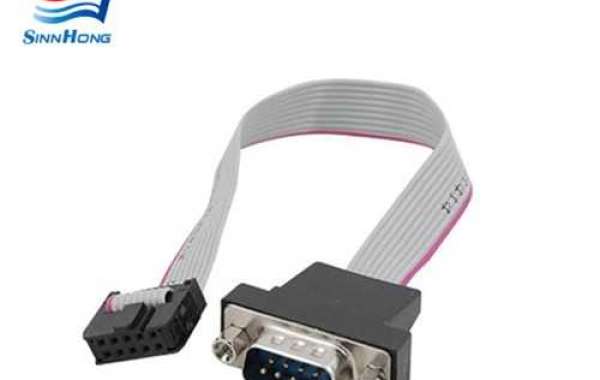Multiple wires are used in ribbon cable assemblies, also known as flat ribbon cable assemblies or planar cable assemblies. IDC (insulation displacement connector) terminations are used. Conducting wires are laid flat and parallel to one another to create the cables utilized in this sort of construction, resulting in a wide, flat end product that resembles a ribbon.
Due to their flat and flexible design, ribbon cables are suitable for situations where space is limited. Ribbon cables are easy to run in straight-run applications, but they cannot bend sideways because of the ribbon profile of the cable. If the ribbon cable needs to adjusted in direction, it can be folded back on itself at a right angle.
The spacing and the number of conductors in the assembly are the two factors that are frequently used to specify ribbon cables. The spacing, also known as the pitch, comes in a range of lengths and is commonly available in 0.025", 0.050", 0.100", 0.156', and 1mm pitch, with custom spacing being made if necessary. The number of locations that a connector may support is directly proportional to the number of conductors, or ways, in an assembly.
Because of this, assemblies are usually limited to 4, 6, 8, 9, 10, 14, 15, 16, 18, 20, 24, 25, 26, 34, 37, 40, 50, 60, 64, and 80 positions. The connections have been standardized in a specific number of ways. The most popular wire used in ribbon cable assemblies is stranded copper wire of size 18 AWG to 34 AWG. Typically, ribbon cables are insulated with PVC, but Teflon and olefin-based compounds can also be used.
Ribbon cables are frequently edge-marked or color coded for ease of termination. Cables with ribbon edges are usually marked with a color that contrasts with the rest of the cable; in certain cases, the color of the edge mark corresponds to the pitch or center spacing of the cable; for example, a cable with a 0.050" spacing typically has a red edge mark.
The individual conductors for color-coded cables (such as twist-and-flat cables and rainbow ribbon cables) are made with a repeating pattern of colors. The typical resistor color coding for this design is brown, red, orange, yellow, green, blue, violet, grey, white, and black. The color pattern is repeated if there are more than 10 conductors required.
The simplicity of termination is the main benefit of ribbon cable. Ribbon cables can be bulk terminated using an IDC connection with fixed and regulated spacing. The conductor and insulator made contact via a sharp, forked contact used by IDC connectors. However, there are times when only one end of an assembly will employ IDC and the other end will be terminated using a crimp or solder. An assembly is usually assembled on both ends using this technique. The pin spacing, total number of pins, and total number of rows used to identify IDC connections.
Hard drives, CD drives, and floppy drives are some examples of the internal parts of a computer that frequently employ ribbon cable assemblies. These include joining moving parts in robots, medical equipment, consumer electronics, white goods, test and measurement tools, automated termination tools, and print heads.
To know more about ribbon cable assembly visit sinnhong.com.










